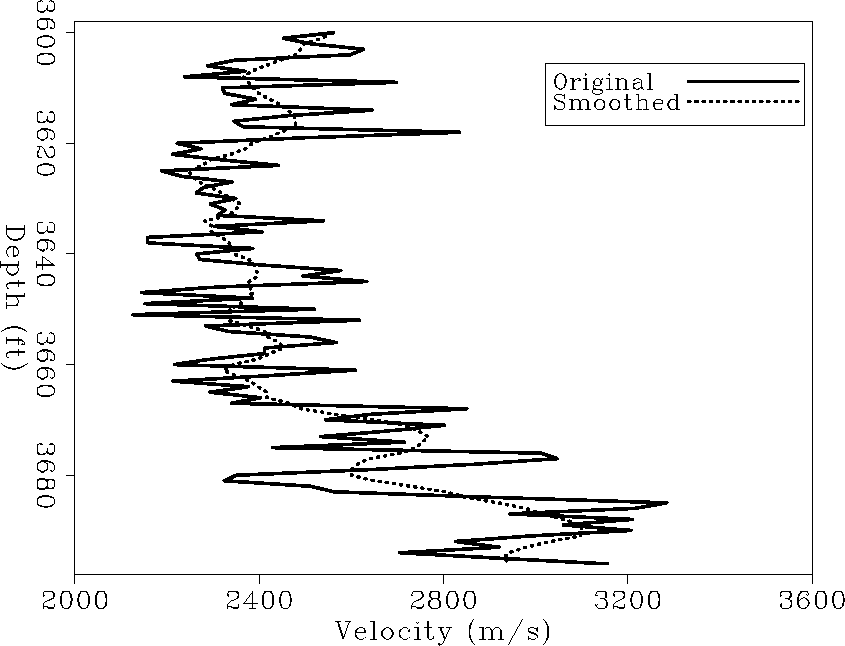|
velocity_depth_trend
Figure 3 Sub-sampled original sonic log and velocity-depth trend computed with 33-point sixth order Savitzky-Golay filter. |  |
Figure 3 shows the original sub-sampled log (top) and the computed velocity-depth trend (bottom) after applying a Savitzky-Golay filter with 33 points (16 to each side) with a sixth-order smoothing polynomial. Extrapolation was used in the original log to 16 points off each of the ends of the log to avoid end-effect problems with the filter. The velocity-depth trend is well recovered, in particular for the deeper samples. This trend will be used as a constraint to the inversion.
|
velocity_depth_trend
Figure 3 Sub-sampled original sonic log and velocity-depth trend computed with 33-point sixth order Savitzky-Golay filter. |  |